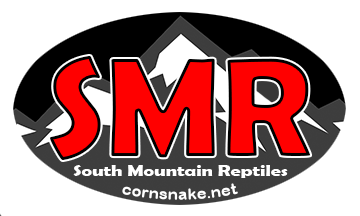Snake Genetics

The genotype of a snake is the sum of its genetic assets. The phenotype is the expression of the genotype, with contributions from morphology (form and configuration), polygenic features, behavior, and other stimuli. In corn snakes, the most observable distinctions between one form (aka morph) and another, are visual; i.e., colors, patterns, structural features. There can be visceral and/or behavioral distinctions, but since such hidden attributes are not immediately observable–and not 100% applicable to respective morphs–phenotype essentially refers to the collective outward appearance of the snake. The word Morph is used in Corn Snakes the way Breed is used in Dogs.
The most common form of a species (aka: wild-type) is the one that is predominantly represented within its wild population. Corn snakes are scientifically considered monomorphic; having only one recognized phenotype within their natural population. While some atypical individuals have been (and always will be) present within the natural range of a species, they are only considered a morph of that species if their proportional genetic participation exceeds 1% of the natural population. Corn snakes do not have such a representative in their natural range at this time, so they are not considered polymorphic (having more than one distinct phenotype that contributes to the natural population). Therefore, at this time, all corn snake morphs are considered hobby products, even though many were first discovered in the wild. Due to their atypical phenotypes, most morphs in the corn snake industry/hobby today (but certainly not ALL of them) are not capable of wild survival.
Contact Us
Tel:830-964-3303
Don Soderberg
South Mountain Reptiles
Canyon Lake, TX
Facebook: https://www.facebook.com/southmountainreptiles
Instagram: https://www.instagram.com/smrcornsnakes/
